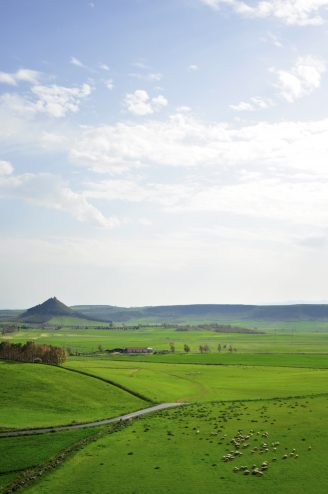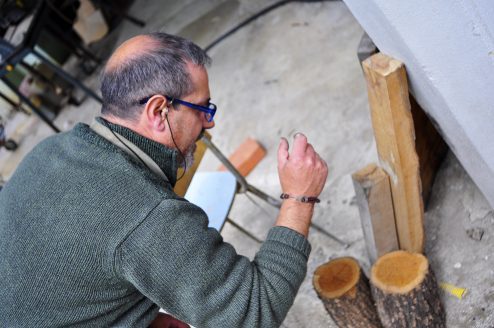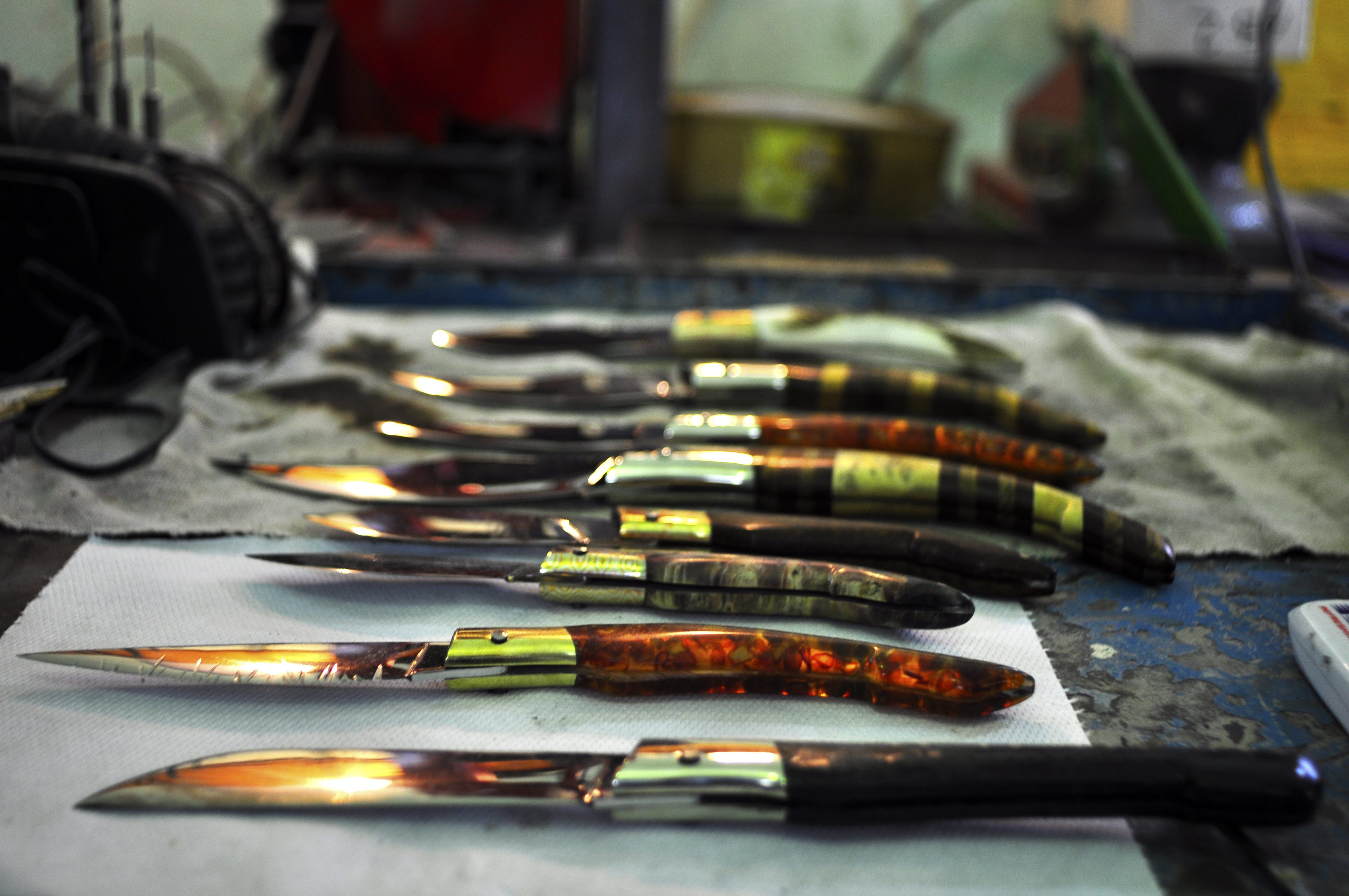If the nuraghi, sa petza ‘e cuaddu, or white sand calas don’t satiate your thirst for authenticity, find a traditional resòlza maker. The Supramonte villages will direct you, and, if you’re lucky, you’ll find Vico in the hills near Baunei.

In a gravel driveway off the main road, surrounded by unassuming junk, you’ll find the entrance to what could be anything from a mechanic to a puppy mill. His son will greet you in broken Spanish and English, but mostly in Sard, a language most closely related to Latin. He’ll tell you his father is on his way back from his hour lunch, or maybe it’s a 4-hour lunch, and that you should stay. Maybe have a cigarette while you wait.

Tommy and I smoked for almost a whole sun-roasting hour before Vico showed up. When he did, he rolled a smoke of his own and, in a somewhat apprehensive tone, inquired about our inquiry.

“We want to see your work.”
“What do you mean?”
I pulled out my leatherman knife, with the hope to eventually trade it for one of his pieces.
“This…you make knives?” I lift up my camera. “Can we take pictures?”
After some unspoken pleasantries, an understanding of what us two deer-eyed Americans were doing there appeared on our hosts’ faces.
“Please, come in.”
Vico slid open a rusted metal door, which once served to secure his shop. These days, it mostly kept out the menacing heat and flies. The mechanical hum of fluorescent lights filled the void, nearly imprisoning me with memories of the gray walls I left at home.

The hand-rolled twigs of tobacco seemed to reappear between his lips after every phrase. Again, in a combination of Sard, Italian, Spanish, and English, as if he chose each word from the language which most appropriately articulated his sentiments, “this is my workshop”.

His son reappeared with a jarra (jug) of deep ruby booze. “Please, try our wine,” as we had heard so often in Sardinia. He was accompanied by his uncle, who showed us the traditional way to drink it from the bottle, with just his index finger through the handle loop and resting on his lifted elbow. We, however, were offered small plastic cups.

Vico explained that what began as a simple blade when the Nuragic people first settled in Sardinia in the Bronze Age evolved into the resòlza, an accessory no man would be caught dead without. Or, rather, would. After society decided we could, and should, sue one another, mainly in the 1900s, laws came into effect banning the traditional swords people carried to display their status, and sometimes defend themselves. Thus, the humble herdsman’s tool became en vogue.

Two types of blades are typically made; a round-edged laurel leaf, and the sharper wheat leaf. From found Mouflon ram horns, to wilted shore wood chosen for its flaws, almost any material can be turned into a knife handle by Vico. His blades, forged by hand, are still meant to shear wool, and sometimes for more carnal uses. Most of the blades in his shop were now adorned with engravings emanating from Vico’s imagination and interpretation of his country.
Unsurprisingly, these knives are no longer valued much by shepherds themselves, nor even your average Giuseppe, as there are fewer than ever. Instead, most of Vico’s customers are now the specialized tourist shops around the island, or romanticists. He has evolved into more of an artist than an artisan. Nonetheless, his skills are sharp.
“Why do you still do this if there’s no money in it?”
“This is what I’ve always done.”

“And you,” I directed my question at his son, “do you know how to make these?”
“Not as well as my father, but I’m in school, so I won’t be doing this for work.”
“Who will continue the tradition?” I asked the craftsman. Before he could respond, his brother’s laughter echoed throughout the small workshop as he encouraged us to have more wine.

It’s unlikely that a sheep will lose its wool, or its life, to one of Vico’s creations. He denied my offer to trade my leatherman.

Reply